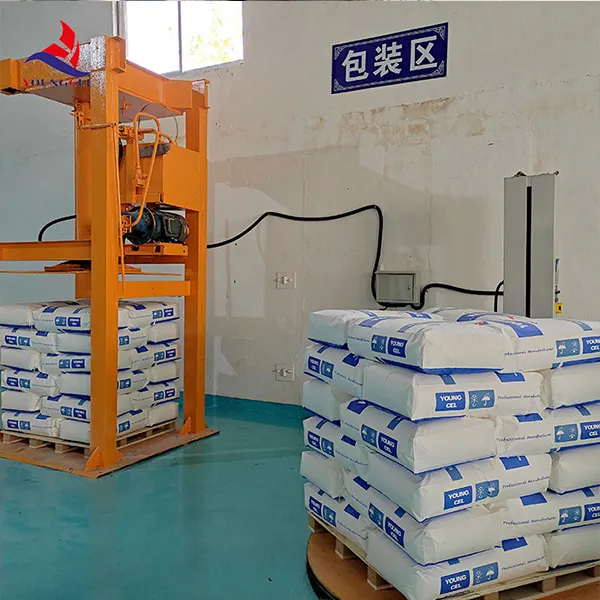The Significance of Cellulose Ethers in Modern Industry
Cellulose ethers are a remarkable class of compounds derived from cellulose, the most abundant organic polymer on Earth. They play a critical role in various industries due to their unique properties and multifunctional applications. This article delves into the significance of cellulose ethers, their production, properties, and their myriad uses across different sectors.
Cellulose, a natural polymer found in the cell walls of plants, is modified to create cellulose ethers through a chemical reaction involving alkylation or etherification. Common types of cellulose ethers include methylcellulose, hydroxypropyl cellulose, and carboxymethyl cellulose, each offering distinct functional characteristics that enhance their applicability.
One of the most notable properties of cellulose ethers is their ability to retain water and form gels. This property is particularly beneficial in the food industry, where cellulose ethers are used as thickening agents, stabilizers, and emulsifiers. For instance, methylcellulose is commonly employed in various food products to improve texture and consistency. Additionally, it exhibits a unique behavior – it thickens when heated and returns to a liquid state upon cooling, making it ideal for use in sauces and dressings that require temperature-dependent viscosity control.
In the pharmaceutical sector, cellulose ethers serve multiple purposes. They are used as excipients in drug formulations, aiding in the controlled release of active ingredients. Hydroxypropyl methylcellulose, for example, is frequently used in tablet formulations to achieve specific release profiles, ensuring that medication is delivered effectively in the body over a prolonged period. Furthermore, cellulose ethers contribute to the formulation of various pharmaceutical products, enhancing their stability and consistency.
cellulos ether

The construction industry also benefits greatly from cellulose ethers. They are commonly added to cement and gypsum-based products to improve workability and adhesion. Hydroxypropyl cellulose, in particular, enhances the flow properties of mortars and plasters, allowing for easier application and reducing the risk of cracking. This makes cellulose ethers indispensable in the production of high-performance building materials that meet modern construction standards.
Another significant application of cellulose ethers is in personal care and cosmetic products. They are utilized as thickening agents and stabilizers in creams, lotions, and gels. Their ability to form a film on the skin enhances moisture retention, making them valuable in hydrating formulations. Moreover, the use of cellulose ethers can improve the sensory attributes of products, providing a smoother application experience that consumers appreciate.
In recent years, the demand for cellulose ethers has surged due to the growing emphasis on sustainability. As biodegradable materials, cellulose ethers align with the increasing shift towards environmentally friendly products. Their natural origin from plant materials contributes to the reduction of carbon footprints, making them a preferred choice in industries that prioritize ecological responsibility.
However, despite their extensive benefits and applications, the production and use of cellulose ethers are not without challenges. Ensuring consistent quality and maintaining sustainability in sourcing raw materials are critical considerations that manufacturers must address. Furthermore, the need for ongoing research to explore new derivatives and formulations that can expand the application scope of cellulose ethers remains paramount.
In conclusion, cellulose ethers are invaluable components in many sectors, including food, pharmaceuticals, construction, and personal care. Their multifunctional properties make them essential in developing innovative products that meet consumer demands for efficiency, effectiveness, and sustainability. As industries continue to evolve and embrace environmentally friendly practices, cellulose ethers are poised to play an increasingly significant role in shaping a sustainable future. Their versatility and efficacy underline their importance in contemporary manufacturing processes and consumer products alike.
-
A Comprehensive Guide to Methyl Ethyl Hydroxyethyl Cellulose: Applications and Industry InsightsNewsNov.24,2025
-
Understanding Methyl 2 Hydroxyethyl Cellulose: Uses, Benefits & Industry InsightsNewsNov.24,2025
-
Hydroxyethyl Methyl Cellulose HEMC: Industrial Uses, Benefits & Future TrendsNewsNov.23,2025
-
HEMC Cellulose: Versatile & Sustainable Industrial Polymer | YoungcelNewsNov.23,2025
-
Methyl Hydroxyethyl Cellulose: Versatile Building Block for Industry & SustainabilityNewsNov.23,2025
-
CAS 9032 42 2: Understanding Polyvinyl Alcohol's Impact on Industry & SustainabilityNewsNov.22,2025




